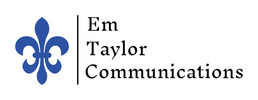Recently, I interviewed with Lisa and Ritchie on the Lisa Clark Valentine Show about workplace conflict. We had an interesting conversation that highlighted both understanding workplace conflict before you take the job and afterwards. During the interview, I mentioned an interesting interviewing experience that alerted me to an intense workplace environment.
Several years ago, while interviewing for a marketing position at large, established bank in Chicago, my interviewer’s boss burst into the office and began making demands of my interviewer. Based on the man’s verbal tongue lashing and aggressive attitude, I immediately got the drift of how things operated for my interviewer at the bank. Naturally, I made a definite note-to-self about how this job would play out for me…
Needless to say, I did not get the job, nor would I have taken it because of what I learned about the work climate during the interview process. Since that time, I have had numerous opportunities to interview and work in a variety of environments that have helped me better understand what kind of conflict situations I’d like to enter and what I would do best to avoid.
We don’t always know what we’re going into with different job situations, but there are some tangible steps we can take both during the interview process and once we’ve taken jobs that make life easier to manage from a conflict resolution perspective.
Before you Take the Job
While there’s a slim chance that I might have taken the Chicago bank job if I had been in extremely dire financial circumstances, I am increasingly more concerned with how to sustain a job rather than just how to secure one. Sometimes we can be too hasty in accepting positions in unbearable circumstances.
In order to avoid unnecessary conflict that will drive us away from certain jobs and their related workplace environments, we can do some work upfront during the interview process to consider our job longevity. Key steps may include:
Once you’ve Taken the Job
If you’re hired as a new manager of people, consider the following questions to prevent immediate potential areas of conflict with those you manage:
On the flip side, ff you’re the newbie being managed by others, I suggest considering that there are multiple ways to have influence even if you don’t have a big title, salary, or other form of leverage.
Too often, we think we have little influence or power because we don’t have the title or the salary. “Little people” can have a huge influence in even large corporations. As my Cisco boss once said, “Sometimes, all you need to do is just show up.” That’s what I did as a 27-year-old in my first really big job; I identified needs and went after meeting them for the company.
Whether you are managing others or are being managed, there are key constructive things you can do that relate directly to conflict resolution in the workplace:
In general, workplace conflict often signals a need for change—perhaps in both human behavior and the processes we have in place. Here are some general warnings for addressing conflicts in the workplace
General Warnings
In terms of warnings, there are a few key areas to consider:
General Opportunities with Workplace Conflict
Finally, let’s consider the opportunities that conflict creates for us to improve and move things forward. Yes, conflict may provide the necessary friction to get things moving in new and better directions.
First, consider the six principles of persuasion developed by Dr. Robert Cialdini. These principles can be harnessed from any level of an organization. The six principles of persuasion include: reciprocity, scarcity, authority, consistency, liking, and consensus.
Second, we do best with conflict when we focus on understanding (rather than merely judging or evaluating) universal human needs, which are the same whether you’re at work or at home. Maslow’s famous hierarchy of needs includes the following types of needs: physical, safety, love and belonging, esteem, knowledge/understanding, aesthetic, self-Actualization, and transcendence
Third, as we learn to ask for what we need in constructive ways, we put ourselves in positions to generate effective patterns of cooperation. From Dr. Marshall Rosenberg’s nonviolent communication steps, I suggest following the pattern below:
Finally, whether you are the manager or the managed employee, take the time and effort to communicate your strengths and what motivates you. I suggest not leaving people to guess what you are good at and what motivates you. Rather than criticize yourself or others, focus instead on strengths that benefit the whole group when expressed constructively.
We have only touched briefly on many multi-layered topics, but here’s a start for considering positive ways to not only view, but address conflict both before and after you take a job.
Several years ago, while interviewing for a marketing position at large, established bank in Chicago, my interviewer’s boss burst into the office and began making demands of my interviewer. Based on the man’s verbal tongue lashing and aggressive attitude, I immediately got the drift of how things operated for my interviewer at the bank. Naturally, I made a definite note-to-self about how this job would play out for me…
Needless to say, I did not get the job, nor would I have taken it because of what I learned about the work climate during the interview process. Since that time, I have had numerous opportunities to interview and work in a variety of environments that have helped me better understand what kind of conflict situations I’d like to enter and what I would do best to avoid.
We don’t always know what we’re going into with different job situations, but there are some tangible steps we can take both during the interview process and once we’ve taken jobs that make life easier to manage from a conflict resolution perspective.
Before you Take the Job
While there’s a slim chance that I might have taken the Chicago bank job if I had been in extremely dire financial circumstances, I am increasingly more concerned with how to sustain a job rather than just how to secure one. Sometimes we can be too hasty in accepting positions in unbearable circumstances.
In order to avoid unnecessary conflict that will drive us away from certain jobs and their related workplace environments, we can do some work upfront during the interview process to consider our job longevity. Key steps may include:
- Interview the interviewer—have questions that you really want the answers to.
- Negotiate benefits and salary before you accept because it’s always harder to do it later. (Research suggests that women do a lot less negotiating salary and benefits upfront than men).
- See if you can test-pilot the job before taking it, or interview others already working in related positions. Maybe even do a little contracting first to see how things play out.
Once you’ve Taken the Job
If you’re hired as a new manager of people, consider the following questions to prevent immediate potential areas of conflict with those you manage:
- Am I trying to help my employees reach their potential or do they need to stay small so I can keep my job and feel important?
- How do I balance decision-making power and obligations?
- Do I allow for others to contribute to the decision-making process?
- Am I clear about whether I am asking to consult or am I extending power and delegating to others?
On the flip side, ff you’re the newbie being managed by others, I suggest considering that there are multiple ways to have influence even if you don’t have a big title, salary, or other form of leverage.
Too often, we think we have little influence or power because we don’t have the title or the salary. “Little people” can have a huge influence in even large corporations. As my Cisco boss once said, “Sometimes, all you need to do is just show up.” That’s what I did as a 27-year-old in my first really big job; I identified needs and went after meeting them for the company.
Whether you are managing others or are being managed, there are key constructive things you can do that relate directly to conflict resolution in the workplace:
- Set or help clarify expectations for your job and those you manage.
- Check in regularly with those you manage or who manage you.
- Figure out how people like to communicate. Adapt to others’ preferred communication styles and be clear about how people can best communicate with you. (I.e., text vs voicemail and the like).
- Use all five conflict approaches rather than just assuming one approach each time will be best. (See the www.conflictfluent blog post on the five conflict approaches: avoid, accommodate, compromise, compete, and collaborate). Don’t overuse one approach.
In general, workplace conflict often signals a need for change—perhaps in both human behavior and the processes we have in place. Here are some general warnings for addressing conflicts in the workplace
General Warnings
In terms of warnings, there are a few key areas to consider:
- Work vs. Home Behavior: Do you change your behavior from one place to another? Ask yourself: could I ever get away with this at home? Why or why not?
- The Fundamental Attribution Error—Do I fall into the trap of criticizing someone’s character when they fail and then justify myself with external excuses when I fail? Let us be gentle with assessing other people’s characters and wary of justifying our own failures and shortcomings.
- Confirmation Bias- Do we gravitate towards what we know or what we want to believe instead of listening to opposing and complementary viewpoints from others?
- As managers, we may focus too often on “opportunities for improvement” for others. We should consider 360 feedback cycles to improve ourselves, processes, and communication in general. Because communication processes involve more than one party, we may be heavily influencing how things roll out in the office in both negative and positive ways.
General Opportunities with Workplace Conflict
Finally, let’s consider the opportunities that conflict creates for us to improve and move things forward. Yes, conflict may provide the necessary friction to get things moving in new and better directions.
First, consider the six principles of persuasion developed by Dr. Robert Cialdini. These principles can be harnessed from any level of an organization. The six principles of persuasion include: reciprocity, scarcity, authority, consistency, liking, and consensus.
Second, we do best with conflict when we focus on understanding (rather than merely judging or evaluating) universal human needs, which are the same whether you’re at work or at home. Maslow’s famous hierarchy of needs includes the following types of needs: physical, safety, love and belonging, esteem, knowledge/understanding, aesthetic, self-Actualization, and transcendence
Third, as we learn to ask for what we need in constructive ways, we put ourselves in positions to generate effective patterns of cooperation. From Dr. Marshall Rosenberg’s nonviolent communication steps, I suggest following the pattern below:
- Make an observation without an evaluation.
- Express an accurate personal feeling.
- Attach a basic need to the expressed feeling.
- Make a specific, concrete request to meet your need.
Finally, whether you are the manager or the managed employee, take the time and effort to communicate your strengths and what motivates you. I suggest not leaving people to guess what you are good at and what motivates you. Rather than criticize yourself or others, focus instead on strengths that benefit the whole group when expressed constructively.
We have only touched briefly on many multi-layered topics, but here’s a start for considering positive ways to not only view, but address conflict both before and after you take a job.


 RSS Feed
RSS Feed